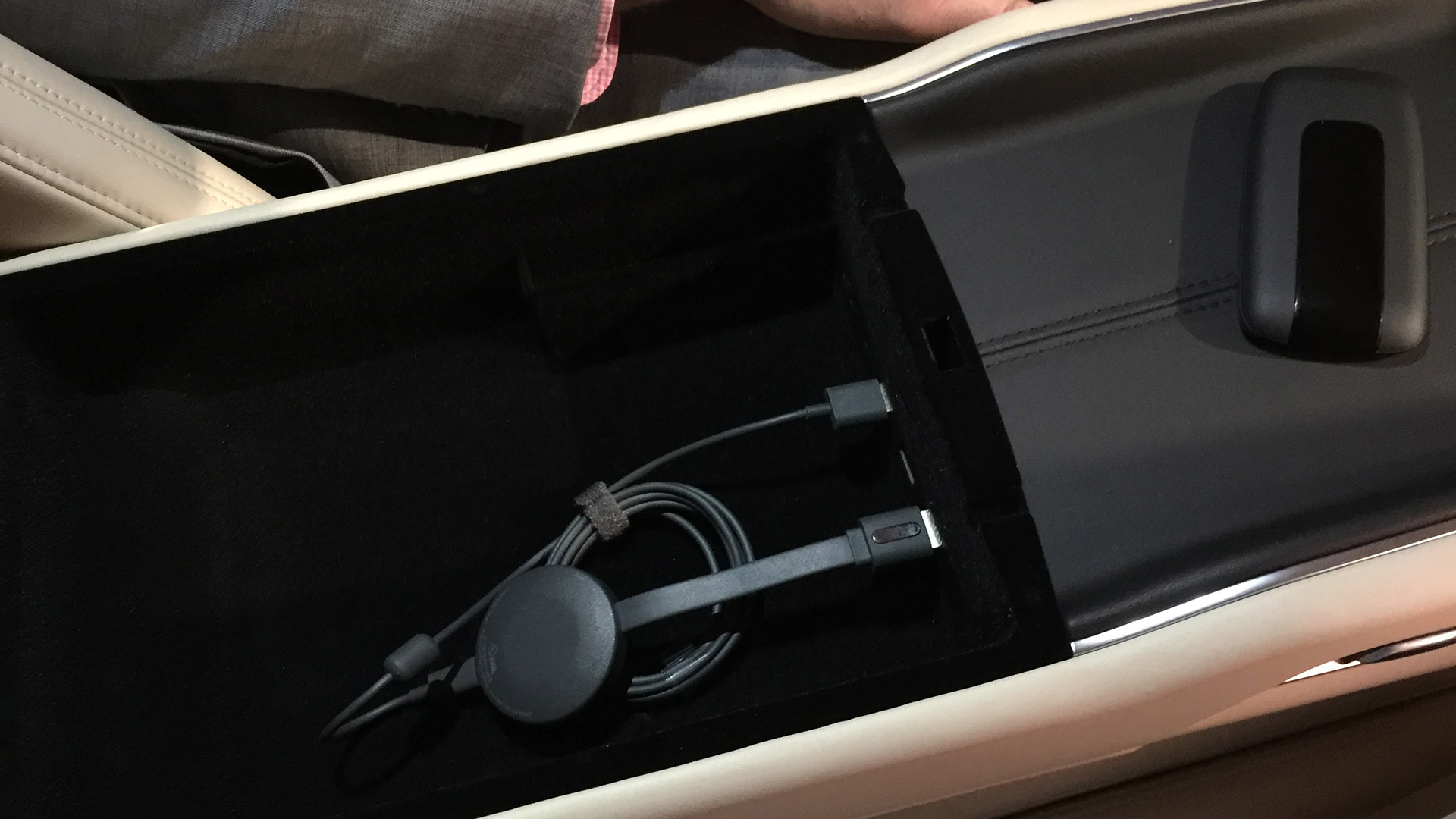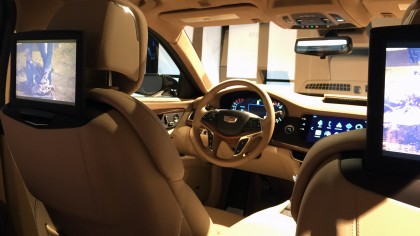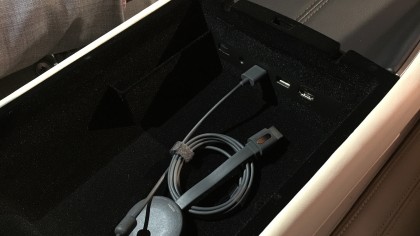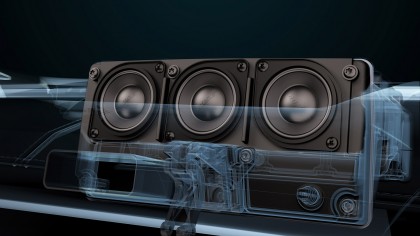Cadillac's CT6 is tech nirvana: Chromecast included, 34 Bose speakers optional
An HDMI port that dazzles your passengers

Say hello to the future of rear-seat entertainment. And, while you're at it, go ahead and put a few feelers out for a chauffeur. As amazing as Cadillac's big-bodied CT6 is to drive, the technophiles in attendance will want to spend most of their time in the rear.
I took an in-depth look at the first-ever CT6 (starts at $53,495) in San Francisco, which is designed to compete with full-size luxury sedans from the likes of Mercedes-Benz and BMW. From a tech perspective, the $2,450 'Rear Seat Package' was most alluring, adding a pair of 10-inch HD screens for the rear passengers, a remote, inbuilt Blu-ray Disc player, a duo of wireless, dual-channel headphones, and an all-important HDMI port. You'll also find gaggle of USB ports, a conventional cigarette adapter, and a standard AC port back there as well.

In an industry-first, Cadillac is giving away a Google Chromecast with each appropriately-equipped CT6 sedan. It may seem silly to "give away" a $35 dongle with a car that costs $50k+, but it's more about the principal than the product. Mikhael Farah, a connected media specialist at General Motors, told me that dealers are being trained to explain how the Chromecast integrates with the car.
Which is pretty insane, really. Who would've thought, even five years ago, that Cadillac dealers would need to know the ins and outs of a Google-branded streaming device in order to complete a post-purchase walkthrough?
In practice, the setup works seamlessly. Riders in the rear can dial up the Chromecast app on their handset of choice (or a laptop, if you'd rather) and proceed to stream as if they were at home staring at an HDTV. Given that the HDMI port is user-accessible, you're free to pop an Amazon FireTV Stick or Apple TV in as well. If you're really looking to get crazy, you could even hook up a game console given that there's an AC port in the rear cabin.
Farah pointed out that the CT6, as with other GM cars, has embedded 4G LTE. That's pretty handy when it comes to streaming, and if you've got a solid connection, you could surely try Overwatch while cruising from Point A to Point B in extreme style.

The other spotlight feature in the CT6 is the optional Bose Panaray sound system. It's included in the wildly expensive Platinum variant of the CT6 (which starts at $88,460), but can be added on other trims for a cool $3,700. That outlay scores you an exclusive 34-speaker system that was engineered over a four-year period to be the best in-car audio system to ever ship from a factory. And, according to my ears, it is. From Michael Jackson's Thriller to a soundtrack of crickets chirping in the night, it was the tightest, most sonically accurate sound I'd ever heard in a vehicle.
Get daily insight, inspiration and deals in your inbox
Sign up for breaking news, reviews, opinion, top tech deals, and more.

Equally impressive is the sound deadening, both inside and out. I enjoyed a soundtrack while a stage was being torn down a few feet away, and heard none of the clamor. I also listened intently for squeaks and buzzes, which are typically easy to find if you crank a car's volume past a certain point. No dice. No creaks, no buzz -- as in, none at all, in the doors or otherwise.
It's tough to say that either option is truly worth the associated price -- both are clearly built for those who aren't easily concerned with money -- but what's important here is the precedent. It's tough to imagine that Cadillac, as well as other automakers, will revert back to composite inputs now that we've seen HDMI working wonderfully in a sedan's back seat.
- Apple CarPlay: Everything you need to know
